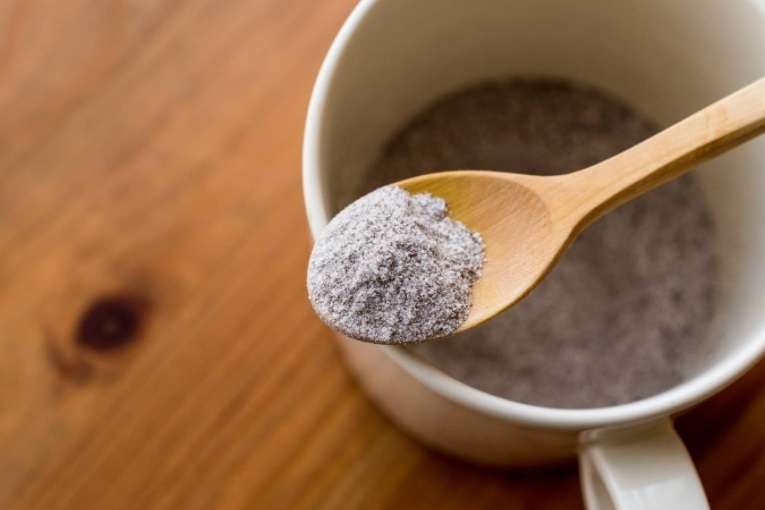
Ever wondered if you can switch up your usual coffee routine by adding powdered milk instead of liquid milk or creamer? You’re not alone! Many coffee enthusiasts are curious about this versatile alternative, especially in situations where fresh milk isn’t an option. Let’s dive into whether powdered milk can be your next coffee companion.
Yes, powdered milk can be used in coffee! It’s a handy substitute for fresh milk or creamer, offering a similar creamy texture and rich flavor when properly blended. Whether you’re at home, in the office, or camping in the great outdoors, powdered milk can come to the rescue, ensuring your coffee is just as delightful as always.
Key Takeaways
- Taste and Texture: When mixed well, powdered milk can mimic the taste and texture of fresh milk in your coffee, ensuring you don’t miss out on that creamy goodness.
- Healthier Alternative: Opting for powdered milk over many non-dairy creamers can be a healthier choice, as it typically lacks the added sugars and artificial flavors found in some creamers.
- Versatility: You have the flexibility to add powdered milk to your coffee at various stages of the brewing process, tailoring the addition to your preferred method and taste.
- Travel-Friendly: With its long shelf life and compact packaging, powdered milk is a fantastic travel companion, ensuring you can enjoy a creamy cup of coffee wherever you are.
The Taste of Powdered Milk in Coffee
When you add powdered milk to your coffee, you might wonder how it stacks up against the usual fresh milk or creamer. Surprisingly, when well blended, powdered milk provides a creaminess and flavor that closely resembles that of fresh milk. While it may not have the exact freshness of dairy straight from the fridge, it does a commendable job of offering a similar mouthfeel and richness.
Coffee creamers, on the other hand, often come with added flavors and sweetness, which can alter the coffee’s taste significantly. If you’re after the pure, unadulterated taste of coffee with a hint of creaminess, powdered milk is a reliable option.
Health Benefits and Nutritional Comparison
Diving into the nutritional landscape, powdered milk holds its own against fresh milk and creamers. It typically offers similar levels of protein and essential vitamins, though some heat-sensitive nutrients might be slightly reduced during the drying process. Unlike many creamers, which can be laden with added sugars and artificial ingredients, powdered milk is often just that—milk, without the extras. This makes it a healthier choice, particularly if you’re monitoring your sugar intake or prefer to keep things natural.
However, for those with lactose intolerance, it’s important to note that powdered milk contains lactose, unlike some non-dairy creamers designed for sensitive stomachs. In essence, if you’re looking for a nutritious add-in for your coffee that maintains the essence of milk, powdered milk is a commendable choice.
How to Use Powdered Milk in Coffee
Adding powdered milk to your coffee is a straightforward process, but the method can vary slightly depending on your coffee-making technique. Whether you’re using a drip coffee maker, a French press, or even instant coffee, there’s a way to integrate powdered milk seamlessly into your routine.
Drip Coffee Maker: If you’re using a drip coffee maker, you have a couple of options. You can add powdered milk directly into the basket with the coffee grounds. This way, as the hot water drips through, it mixes with the powdered milk, creating a uniformly creamy brew. Start with a tablespoon per cup and adjust to taste. Alternatively, you can add powdered milk to your cup and pour the brewed coffee over it, stirring well to ensure it dissolves completely.
French Press: For French press enthusiasts, add powdered milk to the bottom of the press before adding your coffee grounds and hot water. The stirring process of the French press will help blend the powdered milk evenly. As with the drip method, begin with a small amount and adjust to your taste preference.
Instant Coffee: Instant coffee and powdered milk are a match made in heaven, especially for travelers or those on the go. Mix the instant coffee and powdered milk in your cup before adding hot water. This ensures that both dissolve properly and create a smooth and creamy cup.
Espresso Machines: While not as common, you can also add powdered milk to espresso. However, it’s best to add the powdered milk to your cup first, followed by the espresso shot, and then stir well. If you prefer a latte or cappuccino, you’ll need to dissolve the powdered milk in a little hot water first before adding the espresso and frothed water.
Tips for Perfect Mixing
- Ensure your powdered milk is fresh and clump-free. If it’s lumpy, sift it before adding it to your coffee.
- Hotter water helps dissolve powdered milk more effectively. If your coffee isn’t hot enough to dissolve the milk, try mixing the powdered milk with a small amount of hot water first.
- Stir vigorously to prevent any undissolved particles. Nobody wants a gritty cup of coffee!
Incorporating powdered milk into your coffee routine can be a game-changer, especially when you’re looking for convenience without sacrificing taste.
Comparing Powdered Milk and Coffee Creamers
When it comes to enhancing your coffee, choosing between powdered milk and coffee creamers can significantly affect both taste and health. Powdered milk is essentially dehydrated milk without added sugars or flavors, maintaining the nutritional profile similar to its liquid counterpart, minus some heat-sensitive vitamins. It’s a more natural option, offering protein, calcium, and vitamins A and D.
Coffee creamers, on the other hand, vary widely in their composition. They often include added sugars, artificial flavors, and other additives to enhance taste and texture, which might not align with everyone’s dietary needs. While they provide a range of flavors that powdered milk can’t, they can also add unnecessary calories and chemicals to your cup.
In terms of dietary suitability, powdered milk contains lactose, making it unsuitable for the lactose intolerant, whereas many non-dairy creamers cater to those avoiding lactose or dairy altogether. However, the trade-off might come in the form of added artificial ingredients in creamers.
DIY Powdered Milk and Coffee Creamers
Creating your own powdered milk or coffee creamer at home can be a rewarding experience, giving you control over the ingredients and thus, your health. To make homemade powdered milk, you’d need to start with liquid milk and dehydrate it, which might require specific equipment like a dehydrator.
For homemade coffee creamer, mix a base of powdered milk with a sweetener of your choice, and add in flavorings as you see fit. This could be vanilla extract, cocoa powder, or cinnamon for a natural flavor boost. This way, you avoid the preservatives and artificial ingredients found in store-bought creamers, aligning your coffee habit more closely with your health goals.
FAQs
Can powdered milk change the taste of my coffee?
Yes, powdered milk can alter the taste of coffee, but when blended well, it provides a creamy texture similar to fresh milk. The key is in the blending – ensure it’s thoroughly mixed to avoid a grainy texture.
Is powdered milk healthier than coffee creamers?
Generally, yes. Powdered milk typically contains fewer additives and less sugar compared to many commercial coffee creamers, making it a healthier choice for those looking to maintain a natural diet.
How do I mix powdered milk in coffee without clumps?
To avoid clumps, add the powdered milk to your cup first, then gradually mix in the hot coffee, stirring continuously. For even smoother results, consider mixing the powdered milk with a small amount of hot water before adding your coffee.
Final Thoughts
Powdered milk in coffee is a convenient, versatile, and often healthier alternative to fresh milk or creamers. It’s especially useful for those seeking a long-lasting, travel-friendly dairy option without sacrificing the creamy texture that milk provides. While it might require a bit of experimentation to perfect your preferred taste and texture, the effort can lead to a satisfying and enjoyable coffee experience, tailored to your tastes and dietary needs.









